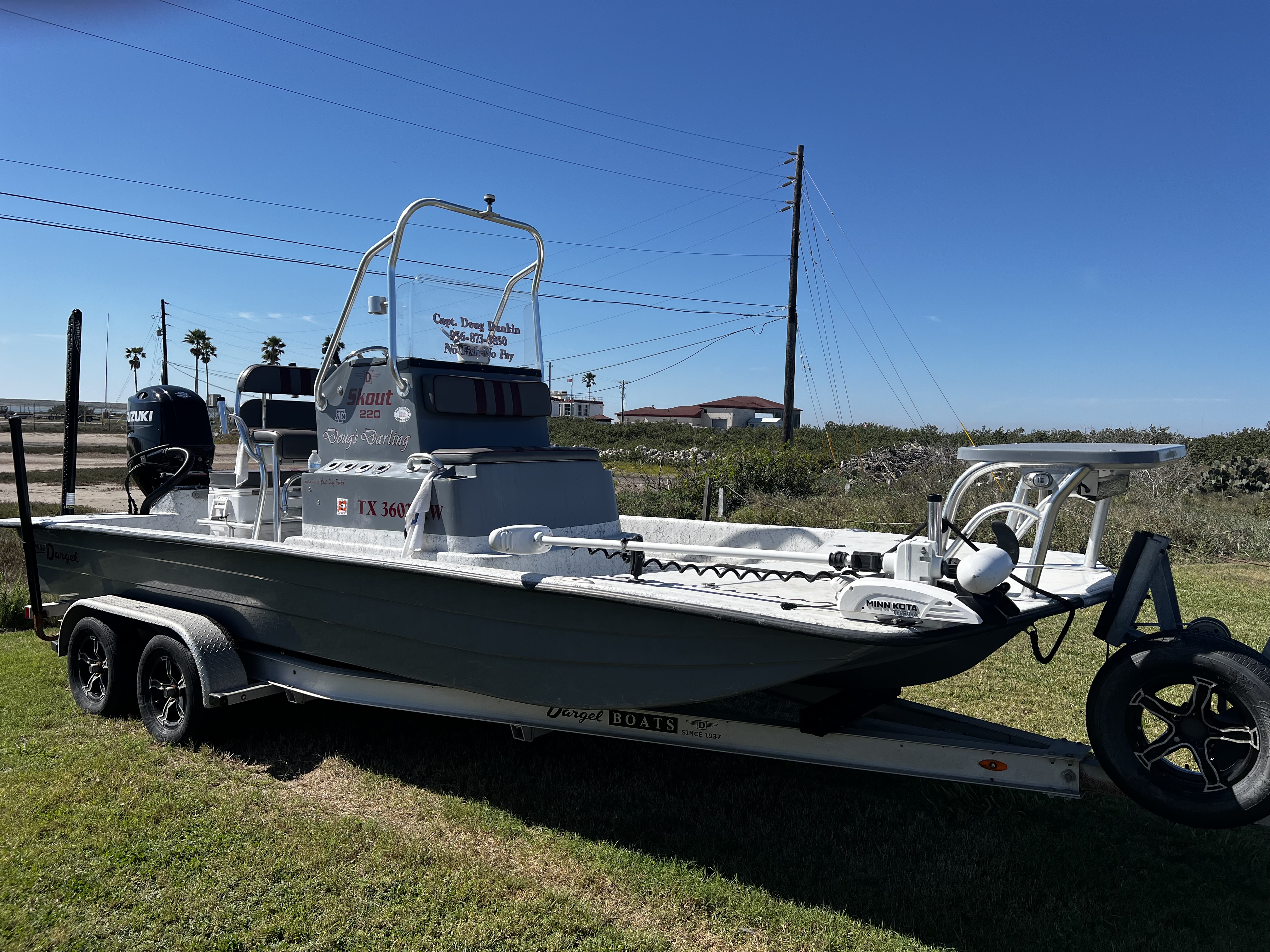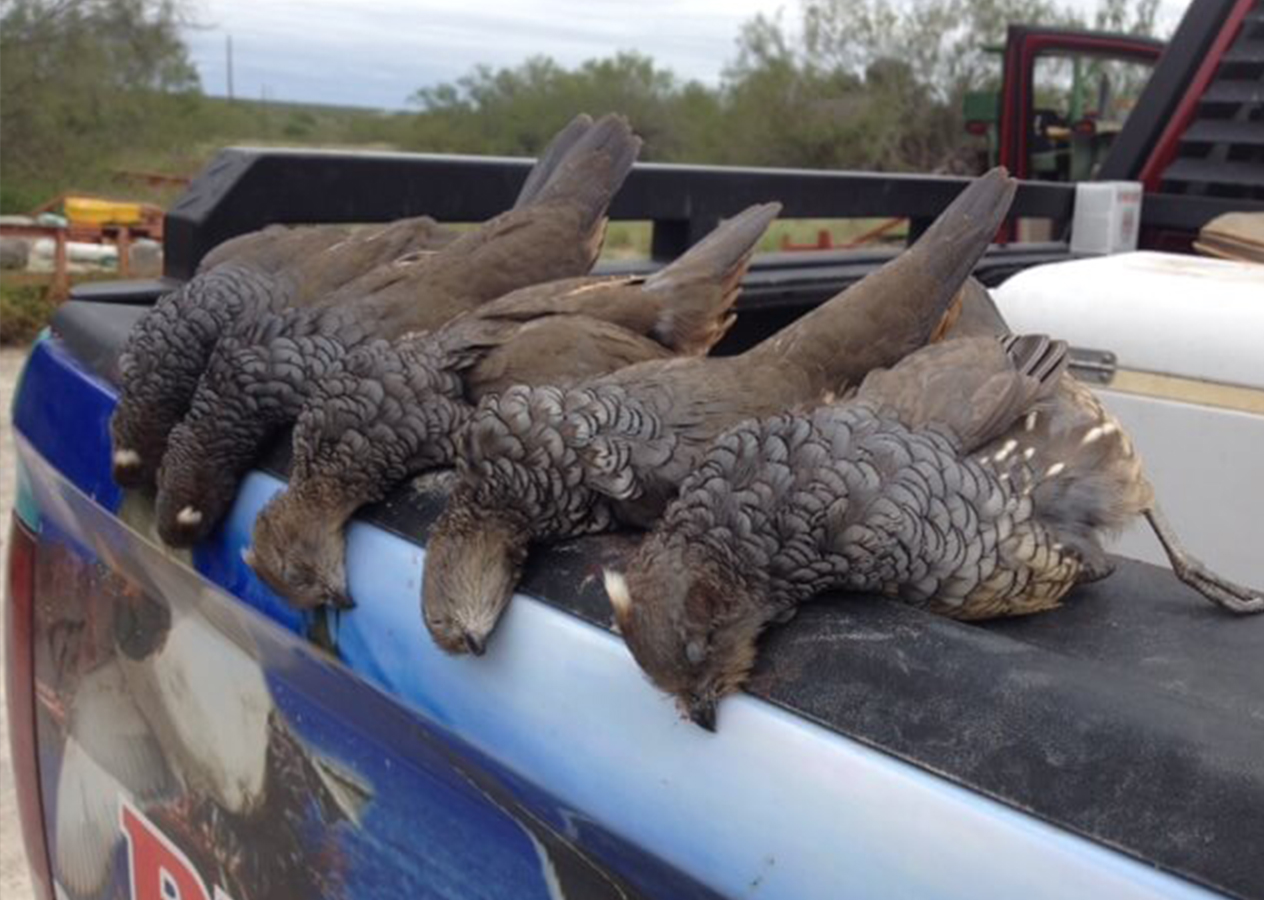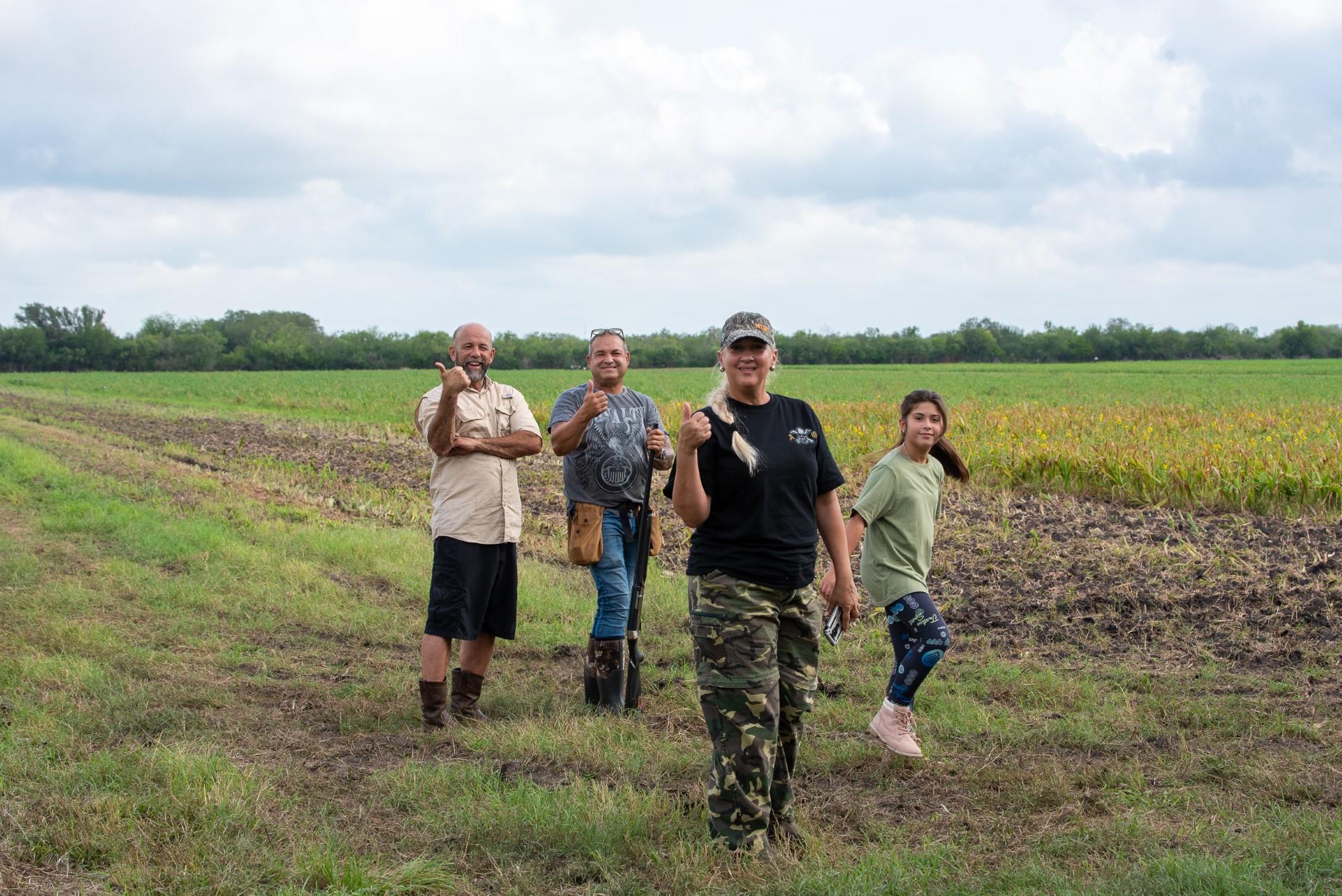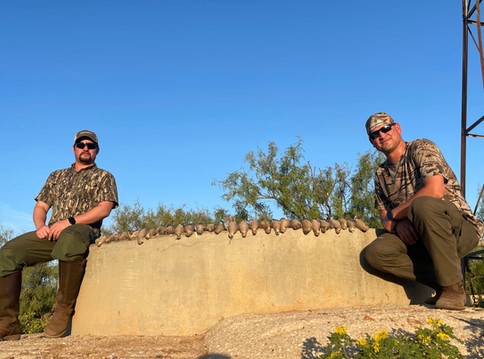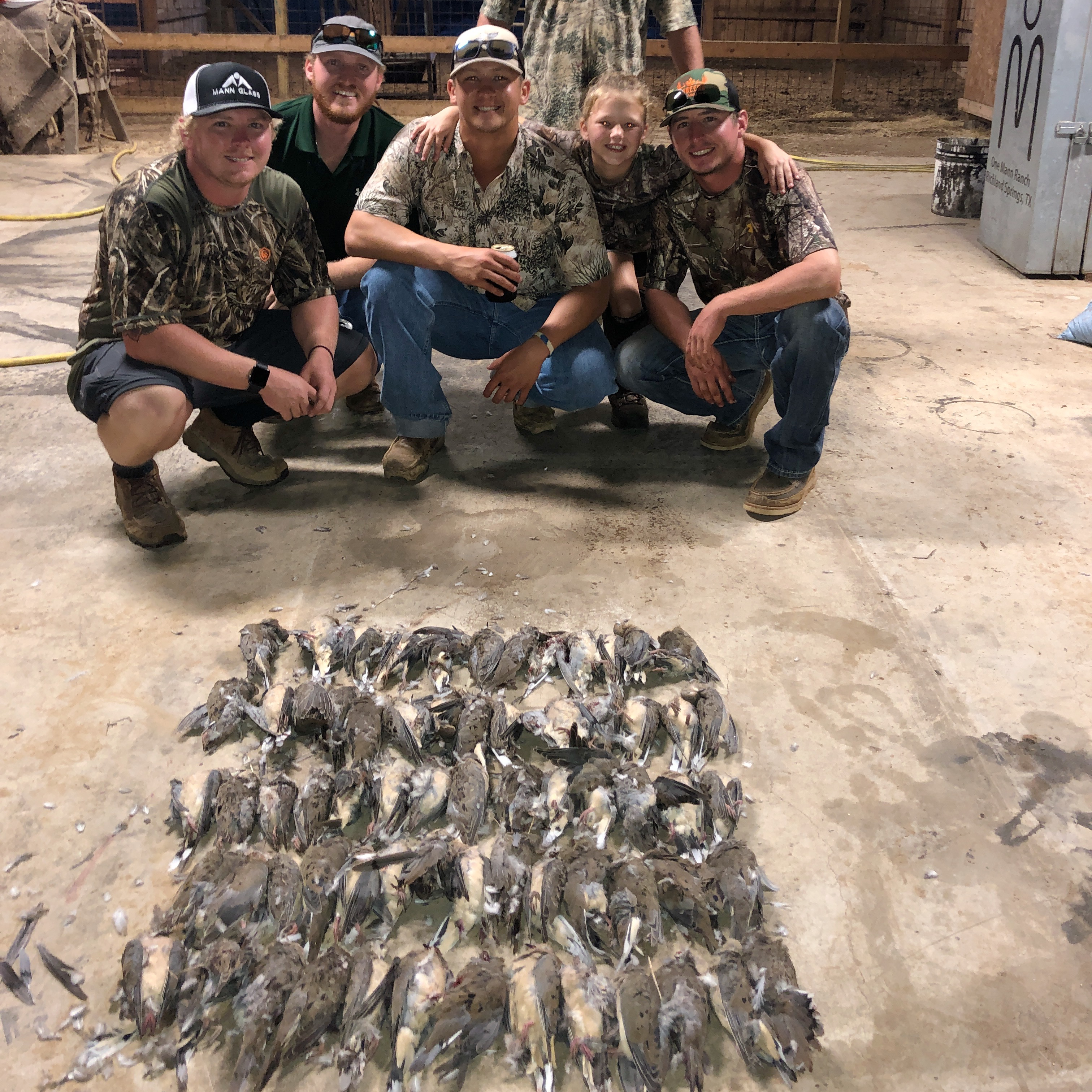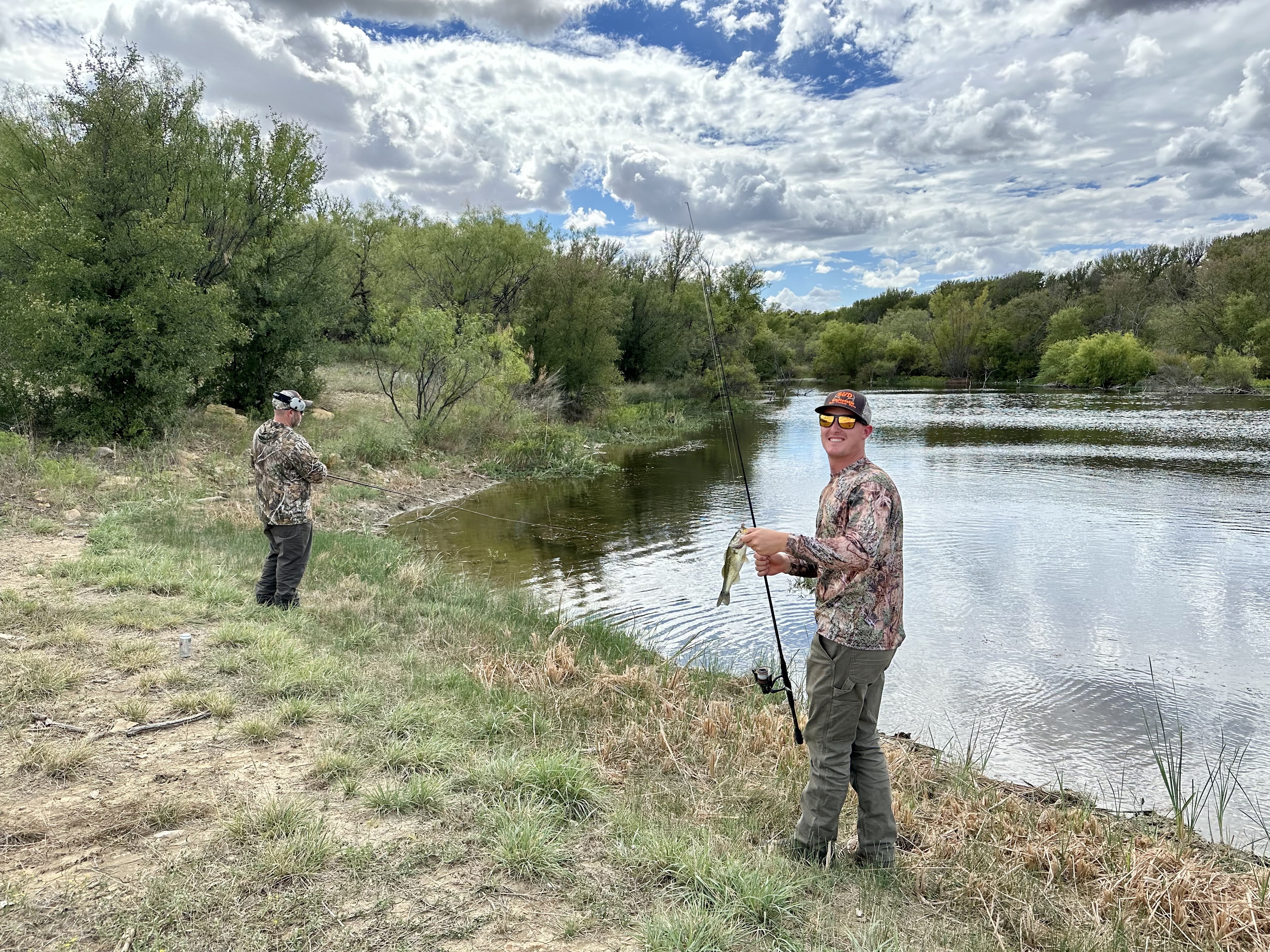Dove Hunting in South Padre Island
White Wing Dove Hunting
Cast & Blast in South Padre Island
DOVE Cast And Blast
North Texas Dove Hunting
Hondo, TX Dove Hunt
Rising Star Dove Hunts
West Texas Dove Hunts
West Texas Weekend Dove Hunting
Abilene Dove Hunting
Dove Hunting in Richland Springs
Richland Springs Dove Hunts
Invasive Species, Dove Hunting in Richland Springs
All Inclusive 3 Day Dove Hunt
We started Captain Experiences to make it easy to book fishing and hunting guides around the world. With over 2,000 Damn Good Guides, our platform makes finding and booking a trip seamless. Head here to check out our trips.
The state of Texas offers some of the best dove hunting in the country due to the diverse habitats that doves love to live and forage in. As such, opening day of dove season is one of the most highly anticipated events for hunters in Texas. In this article, we'll break down everything you need to know before getting out on your annual hunt, including the legal species you can hunt, bag limits, and so much more.

If you're new to dove hunting, check out our guide on essential dove hunting gear you need to make your first hunt a success.
Dove Species & Regulations in Texas
In Texas, there are a few different types of doves and migratory birds you may encounter while out on a hunt, but not all are legal to shoot.
Legal Dove Species in Texas
Mourning Dove
These birds are brown with black spots on wing and a long, pointed tail. You can find Mourning doves across all of Texas.
White-winged Dove
These birds feature a white bar on their wing and a long, rounded tail. You can typically find them in South Texas but their populations are starting to spread across the state.
White-tipped Dove (White-fronted)
These birds have a large, rounded tail with rust-colored wing linings, and can be found in South Texas.
Eurasian Collared-Dove
The Eurasian collared-dove is an invasive species that has no closed season or bag limits. The have a narrow black collar on nape of neck with a white, squared tail underside, pale gray body, black bill, and red irises. Although there is no closed season for Eurasian collared-doves, it's recommended that you keep the plumage on the birds for identification purposes.
Rock Dove (Rock Pigeon)
There is no closed season or bag limit restrictions for rock doves, commonly known as the common pigeon. Like the Eurasion collared-dove, keep the plumage on the bird so that it's easy to identify.
Protected Dove Species in Texas
In Texas, you're unable to shoot some species of dove, no matter the season. These three dove species are currently protected:
Band-tailed Pigeon
These birds feature a yellow bill and white band on their neck. You'll typically find these in wooded mountain areas. Do not shoot these if encountered.
Inca Dove
These birds are small, brown and their feathers resemble scales from a distance. You'll encounter this species of dove in urban and suburban areas, woodlands edges, savannahs and thickets.
Texas Dove Hunting Zones

The dove season regulations in Texas are divided by hunting zones across the state. Seasons can vary depending on what zone you're hunting in, so make note before you head out on your zone's opening day.
North Hunting Zone
The North Zone encompasses a portion of the state, stretching from the northern border with Texas down to a boundary that resembles a slightly wavy diagonal line, extending from Fort Hancock in the west to the Texas-Arkansas state line in the east.
The southern boundary, or "bottom," of the North Dove Hunting Zone is delineated by three major highways: I-30 from Texarkana to Fort Worth, I-20 from Fort Worth to Kent, and I-10 from Kent to Fort Hancock. Areas north of these highways fall within the North Zone.
Central Hunting Zone
The Central Zone starts just south of these boundaries and extends further south to another set of demarcations. For this zone, I-10 serves as the southern boundary from Orange, through Houston, and all the way to San Antonio. However, in San Antonio, the boundary shifts to follow State Loop 1604 until it intersects with US Highway 90. From there, US 90 becomes the boundary from San Antonio to Del Rio.
South Hunting Zone
The South Zone includes all areas from the bottom of the Central Zone's boundary to the southern border of Texas.
2024 Texas Dove Season Dates, Regulations, and Bag Limits
North Zone
The regular season for the North Zone runs from September 1, 2024 through November 10, 2024 and re-opens from December 20, 2024 through January 7, 2025.
Central Zone
The regular season for the Central Zone runs from September 1, 2024 through October 27, 2024 and re-opens from December 13, 2024 through January 14, 2025.
South Zone
The regular season for the South Zone runs from September 14, 2024 through October 27, 2024 and re-opens from December 13, 2024 through January 21, 2025.
Special White-Winged Dove Days
In addition to the regular season, there are special white-winged dove days slotted for the beginning of the month. The 2024 white-winged dove days are September 1-2, 2024, September 6-8, 2024 and September 13, 2024.
Texas Hunting License Requirements
To hunt dove in Texas, you're required to have a valid Texas hunting license, along with a migratory bird stamp. You can purchase these online from the Texas Parks & Wildlife website or from one of 1,800 retail locations throughout the state.
Additional Things To Know About Dove Hunting In Texas
Only Shoot Dove During Legal Shooting Hours
In Texas, hunters are only allowed to shoot during legal shooting hours. This begins a half hour before sunrise and goes to sunset. If you're hunting in the morning, make sure to note what time the sun rises before pulling the trigger on your first dove.
Book Your Next Texas Dove Hunt

Find your perfect dove hunt this season with one of our local, vetted Texas dove hunting guides. We offer hunts across the entire state, from Abilene to Roma!
Jake Lane
Updated on August 5, 2024

March 8, 2022

June 28, 2023

October 26, 2020

January 19, 2021

June 22, 2022
Related Articles
June 27, 2022
August 1, 2024
June 27, 2022
Featured Locations
- Fishing Charters Near Me
- Austin Fishing Guides
- Biloxi Fishing Charters
- Bradenton Fishing Charters
- Cabo San Lucas Fishing Charters
- Cancun Fishing Charters
- Cape Coral Fishing Charters
- Charleston Fishing Charters
- Clearwater Fishing Charters
- Corpus Christi Fishing Charters
- Crystal River Fishing Charters
- Dauphin Island Fishing Charters
- Daytona Beach Fishing Charters
- Destin Fishing Charters
- Fort Lauderdale Fishing Charters
- Fort Myers Fishing Charters
- Fort Walton Beach Fishing Charters
- Galveston Fishing Charters
- Gulf Shores Fishing Charters
- Hatteras Fishing Charters
- Hilton Head Fishing Charters
- Islamorada Fishing Charters
- Jacksonville Fishing Charters
- Jupiter Fishing Charters
- Key Largo Fishing Charters
- Key West Fishing Charters
- Kona Fishing Charters
- Lakeside Marblehead Fishing Charters
- Marathon Fishing Charters
- Marco Island Fishing Charters
- Miami Fishing Charters
- Montauk Fishing Charters
- Morehead City Fishing Charters
- Naples Fishing Charters
- New Orleans Fishing Charters
- New Smyrna Beach Fishing Charters
- Ocean City Fishing Charters
- Orange Beach Fishing Charters
- Panama City Beach Fishing Charters
- Pensacola Fishing Charters
- Pompano Beach Fishing Charters
- Port Aransas Fishing Charters
- Port Orange Fishing Charters
- Rockport Fishing Charters
- San Diego Fishing Charters
- San Juan Fishing Charters
- Sarasota Fishing Charters
- South Padre Island Fishing Charters
- St. Augustine Fishing Charters
- St. Petersburg Fishing Charters
- Tampa Fishing Charters
- Tarpon Springs Fishing Charters
- Venice Fishing Charters
- Virginia Beach Fishing Charters
- West Palm Beach Fishing Charters
- Wilmington Fishing Charters
- Wrightsville Beach Fishing Charters

